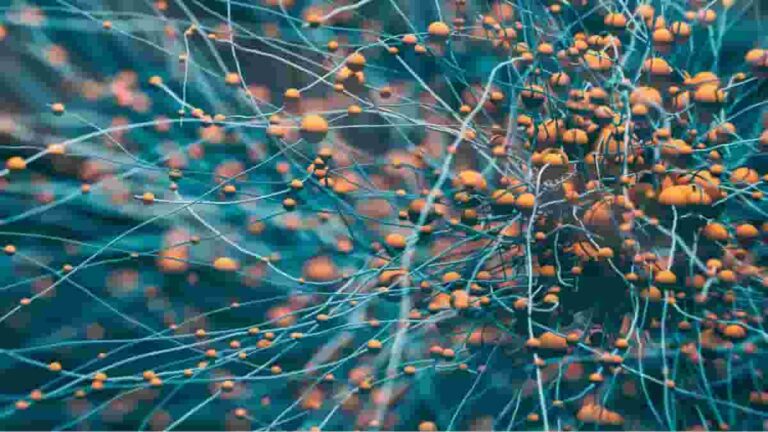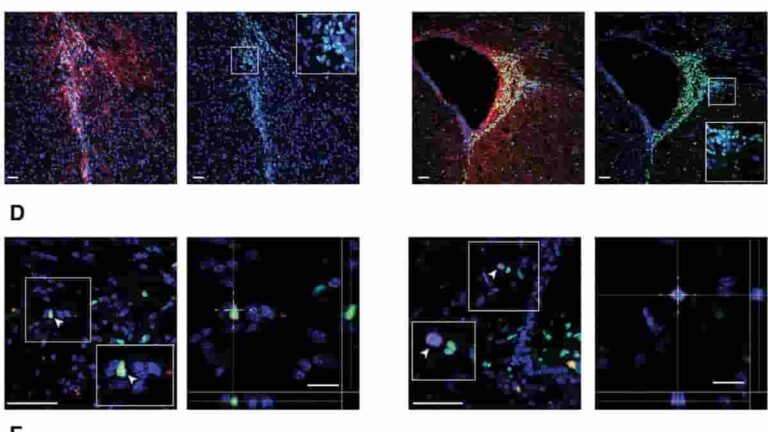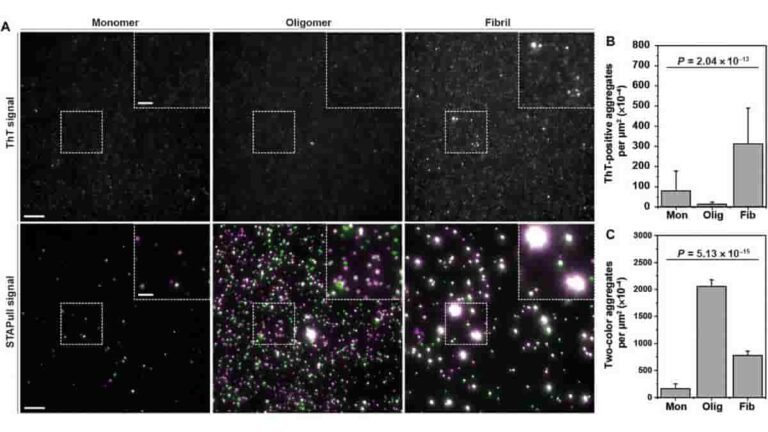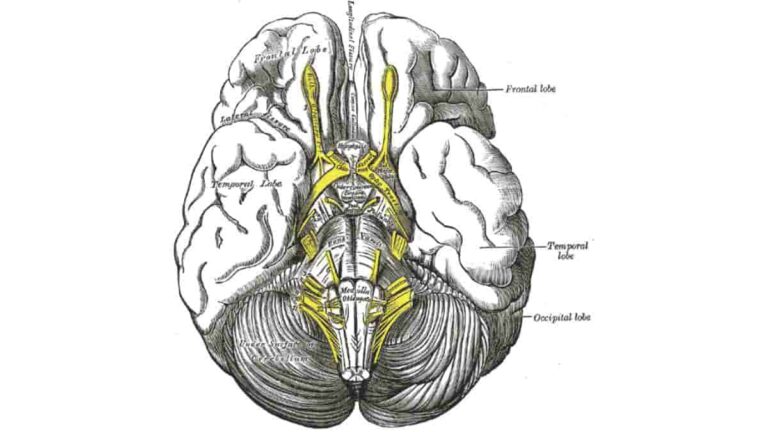Neuropsychiatric symptoms that doctors commonly see in Alzheimer’s disease patients stem from brain inflammation rather than amyloid and tau proteins, University of Pittsburgh School of Medicine researchers report. The discovery adds to the growing body of evidence supporting the role of neuroinflammation in Alzheimer’s disease progression and suggests new avenues for the development of therapies…
Category: Neurology
Stem Cell Therapy Shows Promise in Progressive Multiple Sclerosis Early Trial
A multinational group of researchers has demonstrated that injecting a particular kind of stem cell into the brains of people with progressive multiple sclerosis (MS) is safe, well-tolerated, and produces a long-lasting effect that seems to shield the brain from additional damage. The work, led by scientists at the University of Cambridge, the University of…
Nanoplastics Support Environments for Parkinson’s in Lab Models
A protein that is naturally found in the brain interacts with nanoplastics, causing changes that are linked to Parkinson’s disease and some types of dementia. In a recently published study led by Duke University, researchers report that the findings lay the groundwork for a new area of investigation, fueled by the timely impact of environmental…
STAPull: Detecting Neurodegenerative Disease Protein Biomarkers
The University of Edinburgh’s Horrocks group has developed a novel solution known as “single-molecule two-color aggregate pull-down,” or STAPull for short, in partnership with UCB Biopharma. Aggregation — a process in which proteins misfold and group together — is a prominent characteristic of a number of neurological disorders, such as Parkinson’s and Alzheimer’s diseases. These…
Molecular Logic of Spinal Circuits Regulating Locomotor Speed
Scientists at the Karolinska Institutet in Sweden have elucidated the molecular logic that underlies the assembly of spinal circuits controlling the velocity of locomotion in adult zebrafish. The adaptability of motor activities in terms of timing, speed, and strength is essential for rapid adaptation to the ever-changing world around us. The most obvious example of…
Increased Hippocampus Metabolism Early Sign of Alzheimer’s Disease
A metabolic rise in a portion of the brain called the hippocampus is an early stage in the development of Alzheimer’s disease, according to Karolinska Institutet researchers. The revelation opens the door to new potential early intervention strategies. Alzheimer’s disease is the most common type of dementia, affecting approximately 20,000 people in Sweden each year.…
Better Slow Wave Sleep In Old Age May Stave Off Dementia
Even a 1% reduction in deep sleep per year for people over 60 years old translates into a 27% increased risk of dementia, according to a new study. The finding suggests that enhancing or maintaining deep sleep, also known as slow wave sleep, in older years could stave off dementia. The study, led by Associate…
What is the Optic Chiasm?
The optic chiasm, also known as the optic chiasma, is the region of the brain where the optic nerves from the right and left eyes intersect. It is situated at the base of the brain, directly beneath the hypothalamus. The optic nerves of the left and right eyes meet in the body’s midline, ventral to…
Depression Risk After Traumatic Brain Injury Higher for Women
Based on an analysis of nine studies involving nearly 700,000 individuals, women are approximately 50% more likely to develop depression than men following a concussion or other traumatic brain injury (TBI). The study, presented at the American Society of Anesthesiologists 2023 annual meeting, provides the highest-quality evidence to date that a patient’s gender influences the…








